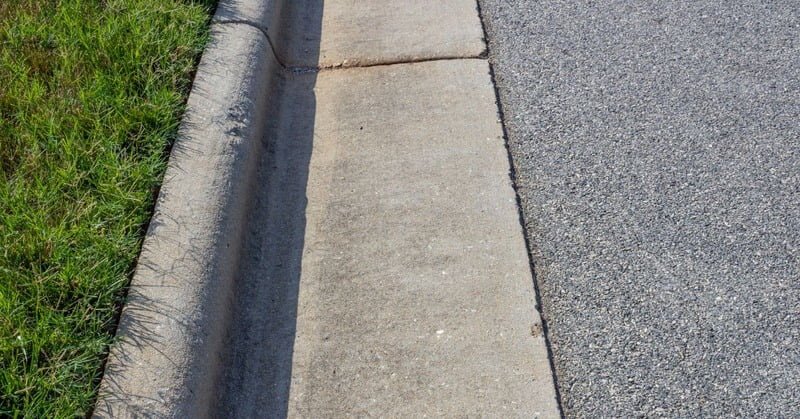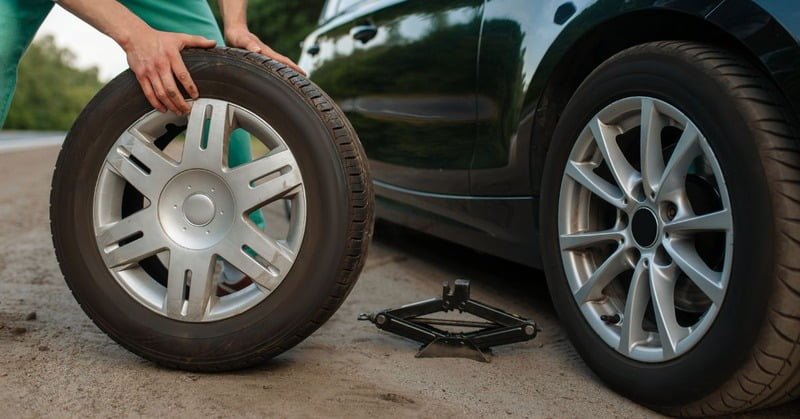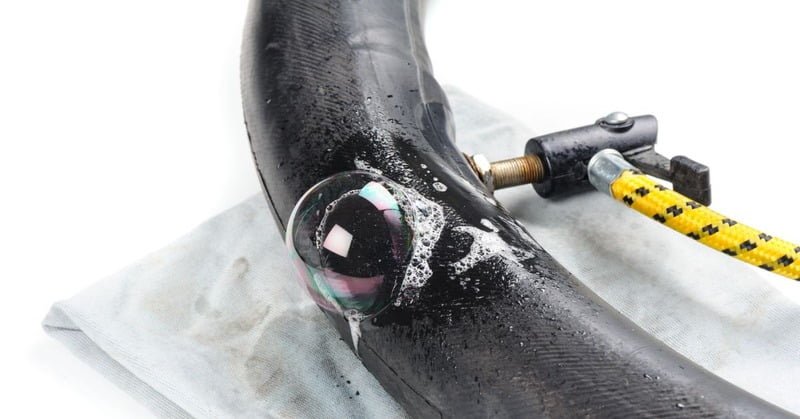Blog
Bulge or Bubble in Tire’s Sidewall: What to Do About It?
“When the inner layer of the tire gets damaged, air can seep between the tire’s layers, causing a bubble or bulge to form.”
Above is the basic definition of how tire bulges or bubbles came to be, and as vehicle owners, this seemingly small anomaly could signify a larger problem, potentially jeopardizing the safety of your vehicle, and even you.
If you’re currently experiencing this issue, or are simply curious about what tire bulges or bubbles are, then you’re in the right place.
In this guide, we’re going to explain what tire bubbles are, their causes, how to deal with them, and how to prevent them from happening again.
Let’s get right to it.
Table of Contents
Is It Safe to Drive with a Bulge or Bubble in Your Tire?

No. Driving with a bulge or bubble in your tire is very unsafe. This defect can weaken the tire’s structure, increasing the risk of a sudden blowout, especially at high speeds.
The National Highway Traffic Safety Administration (NHTSA) has identified tire failure as a causative factor in approximately 11,000 crashes each year.
That’s an alarming 30 accidents per day in the U.S. caused by issues like tire bubbles.
Not only does this jeopardize your safety, but it also risks the safety of your passengers and other drivers sharing the road with you.
What Causes a Bubble or Bulge in Your Tire’s Sidewall?

Tire bulges and bubbles are alarming signs of damage, and understanding their causes can help you prevent them and ensure your safety on the road.
Let’s explore some of the primary causes of these unsightly and dangerous tire issues.
Impact Damage and Harsh Road Conditions
One of the most common reasons for tire sidewall bulges is the impact damage caused by:
Potholes

Striking a deep pothole can compress the tire against the rim, leading to internal damage.
Curbs

Frequently running up onto curbs when parking or hitting them at an angle can cause sidewall damage.
Rough Roads and Debris

Uneven road surfaces and debris like rocks, nails, or other sharp objects can be detrimental to tires.
Speed Bumps and Railroad Crossings
Driving too fast over these can exert undue pressure on the tires, causing them to bulge.
Manufacturing Defects

While the modern tire manufacturing process is rigorous and well-refined, occasional flaws can compromise tire integrity.
Issues might arise if the adhesive bonding the multiple tire layers doesn’t hold up, leading to gaps and subsequent bubbles.
Also, if substandard or insufficient materials are used during the manufacturing process, it can render the tire more vulnerable to external impacts, resulting in bulging.
Improper Tire Pressure
Tire pressure plays a pivotal role in tire longevity and safety. Under-inflated tires tend to flex more, making them more susceptible to damage, causing sidewall protrusions.
Conversely, over-inflating tires can place undue stress on the tire structure, increasing the risk of bubbles forming.
Extreme Weather Conditions

The health and integrity of tires can be influenced by various climatic conditions. For instance, in extremely cold environments, tire rubber can become more rigid.
This rigidity can heighten the risk of bulges forming when the tire encounters an unexpected impact.
Driving on a Damaged Tire
Driving on an already compromised tire can exacerbate existing problems. Even traveling a short distance on a flat or damaged tire can lead to more extensive sidewall harm.
Age of the Tire
As tires age, the materials they’re made from can degrade. Older tires, even if they haven’t reached their tread wear limit, may be more susceptible to damage from impacts due to the natural degradation of materials over time.
Incorrect Tire Installation

If a tire isn’t mounted or installed correctly, vulnerabilities can arise. For instance, if the tire bead isn’t seated correctly during installation, it can create a weakened area prone to bulging.
These are the most common causes of tire bulges or bubbles. Now, the next step is to understand what to do about them.
We’ll discuss that in the following section.
Can a Tire Bulge or Bubble Be Fixed?
No. A tire bulge or bubble signifies structural damage to the tire’s internal components, rendering it beyond repair.
Driving on a tire with such damage poses significant risks, including the potential for a sudden blowout.
What Can I Do Then?
Replace the Tire Immediately

The most advisable action is to replace the damaged tire at the earliest opportunity. Even if the bubble or bulge seems minor, the tire’s structural integrity is at risk, making it susceptible to unexpected failure.
Avoid Driving
If you notice a bubble while driving, try to limit further travel. If you have a spare tire, consider replacing the damaged one. If changing the tire isn’t an option or you lack the necessary skills, consider seeking roadside assistance or a towing service.
Consult Professionals

When in doubt, always consult with a professional auto mechanic or tire center. They can guide you on the best course of action and help you choose the right replacement tire for your vehicle.
Review Your Warranty

If the bubble or bulge resulted from a manufacturing defect, your tire might fall under the manufacturer’s warranty, potentially entitling you to a free or discounted replacement.
It’s essential to note that most warranties exclude damage from external factors, such as hitting potholes or curbs.
How to Prevent a Tire Bulge or Bubble From Happening Again
If you’ve come this far, you’re sure to want to know what preventive measures to take to avoid this problem from happening again. Let’s go through them step-by-step.
Invest in Quality Tires

Investing in top-tier tire brands might be pricier upfront, but the benefits in durability and safety often outweigh the initial costs.
Regular Inspections and Maintenance

Pairing these quality tires with routine checks at a professional tire center ensures that you’re getting the most out of your investment. Services like pressure checks, tire rotations, and alignment evaluations can preempt many tire-related issues.
Ensure the tires are rotated periodically, and heed any Tire Pressure Monitoring System (TPMS) warnings.
Equip Yourself

A tire gauge is a small tool but can be a significant game-changer.
Regularly checking your tire pressure, especially during seasonal transitions, can help you catch anomalies before they become major issues. While modern vehicles with TPMS offer valuable alerts, manual checks provide an added layer of assurance.
Know Your Roads, Avoid the Hazards
While you can’t predict every pothole on the road, if you’re familiar with your daily routes, try to remember the locations of significant road imperfections and avoid them. Similarly, if you know areas with frequent construction or roads laden with debris, consider alternate routes.
Consider Additional Protection

For those living in areas with poor road conditions or frequent temperature fluctuations, consider investing in tire protection plans or warranties. While not all damages might be covered, these plans can offer peace of mind and potential savings in the long run.
Drive Carefully and Strategically

Impacts from potholes, speed bumps, and curbs are among the primary causes of tire bubbles.
By being more observant and circumventing these hazards, you significantly lessen the chances of damaging your tires.
If you often find yourself accidentally bumping into curbs when parking, consider using curb ramps to ease the transition between the road and the curb, thus reducing the impact and potential damage.
Conclusion
To end things, while no prevention method guarantees absolute immunity from tire bulges or bubbles, these strategies can significantly reduce their likelihood.
Specifically, using tools like our Smooth Curb – Driveway Curb Ramp can offer an effective solution.
Not only does it reduce the risk of your tire bulging, but it also helps mitigate potential damages your car might encounter during transitions between the road and the curb.
Our team at Smooth Curb is dedicated to assisting you with your concerns. If you have any questions, don’t hesitate to leave a comment.
If you want to read more about similar cases, feel free to check out our blog. We focus on creating content that discusses how curb ramps can help prevent tire-related issues, such as ‘Can Hitting a Curb Damage My Tire?’
By taking a proactive approach, you not only ensure the longevity of your tires but also enhance your overall driving safety.
We look forward to seeing you in our next post.
FAQs
Here is some information about tire bubbles.
What exactly is a tire bubble or bulge?
A tire bubble or bulge occurs when the inner layer of the tire gets damaged, causing air to seep between the tire’s layers, leading to a visible protrusion on the tire’s sidewall.
How often should I check my tires for bubbles or other anomalies?
It’s advisable to inspect your tires regularly, ideally every time you fill up your gas tank. This will help in early detection of potential issues.
Does tire age affect its susceptibility to bubbles?
Yes, older tires, even if they haven’t reached their tread wear limit, may be more susceptible to damage from impacts due to the natural degradation of materials over time.
I haven’t hit anything, so why is there a bulge in my tire?
It’s possible for a tire bulge to form even if you don’t recall damaging your tire. Manufacturing defects, age-related degradation, or undetected minor impacts can all lead to the formation of a tire bulge. Additionally, sometimes the damage isn’t immediately apparent and the bulge forms sometime after the initial incident.
Are tire bubbles covered under warranty?
If the bubble or bulge resulted from a manufacturing defect, it might be covered under the manufacturer’s warranty. However, most warranties exclude damage from external factors.


